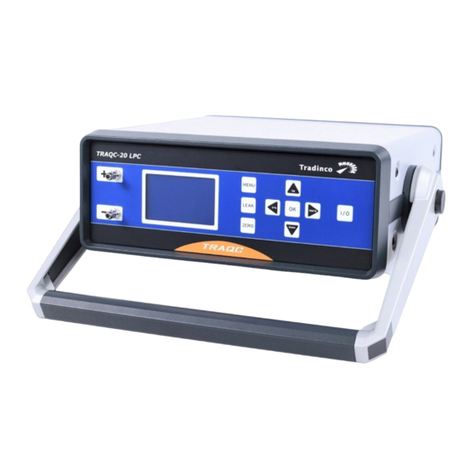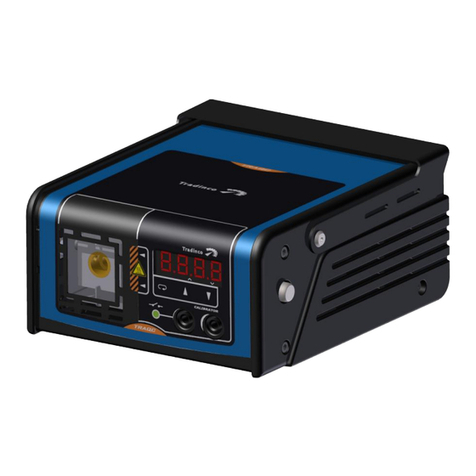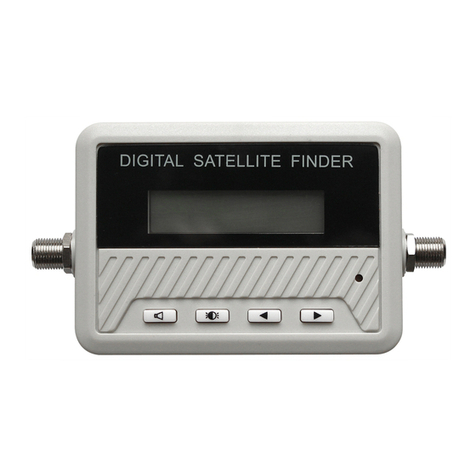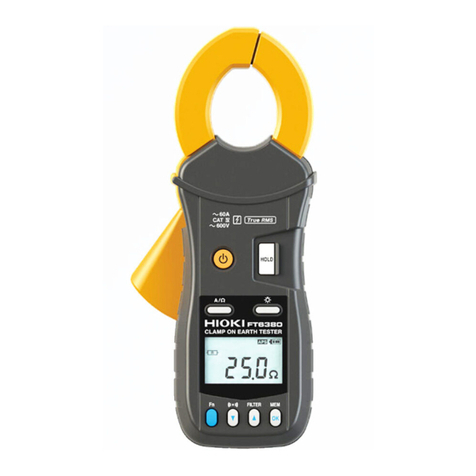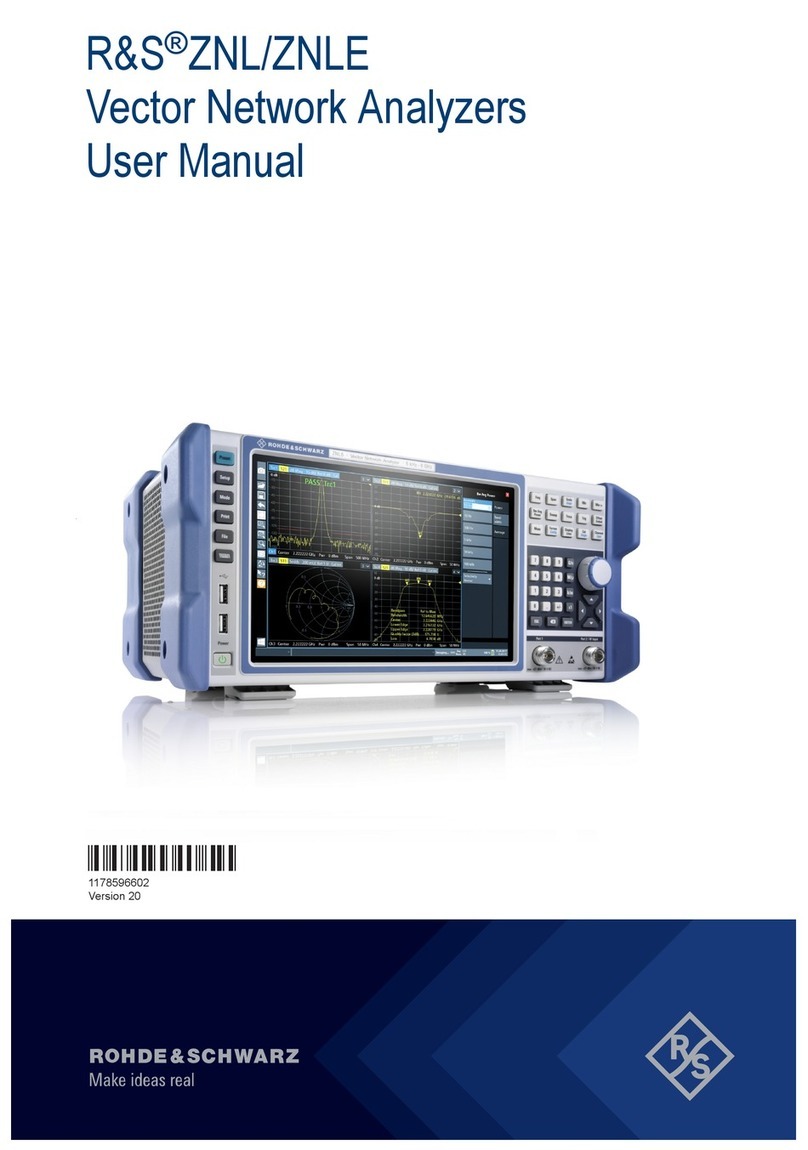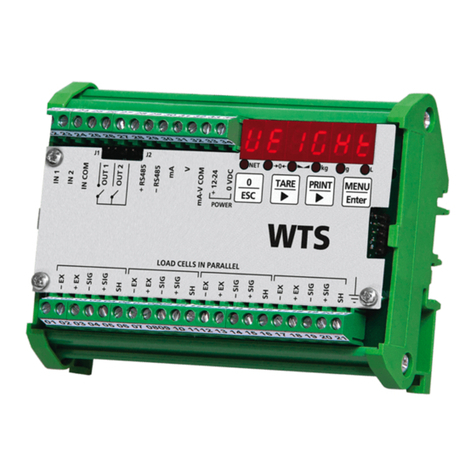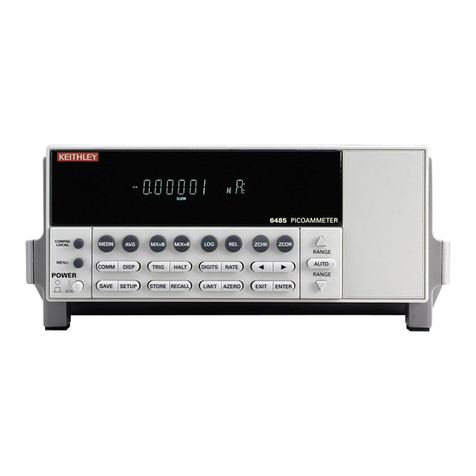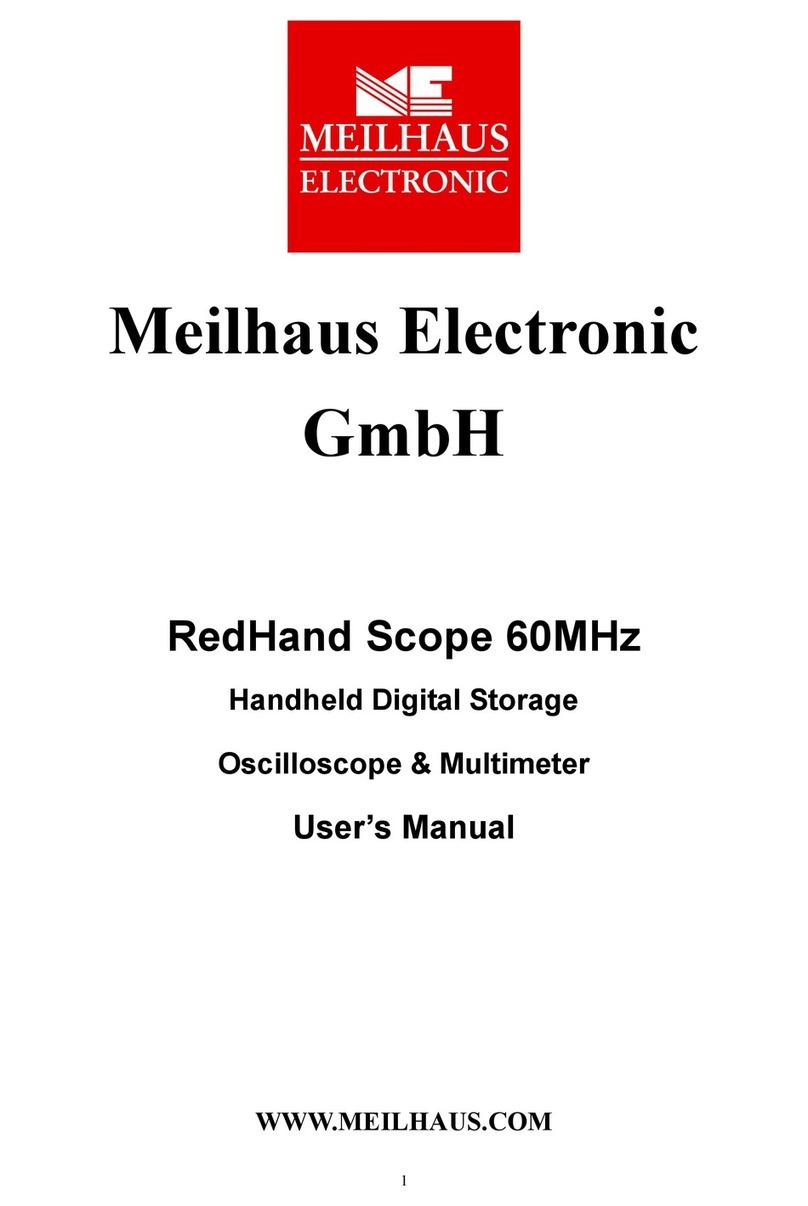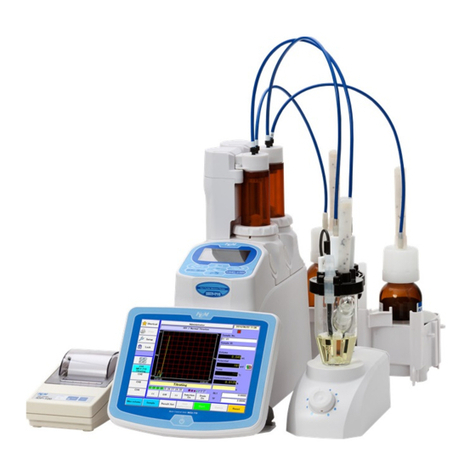Tradinco TRAQC-3 LL User manual

User Manual
TRAQC-3 LL
TRAQC-3 LL 12/2018 EN Rev.5
page : 1
TRAQC-3 LL
Dry block Calibrator
User Manual

User Manual
TRAQC-3 LL
TRAQC-3 LL 12/2018 EN Rev.5
page : 2
Content
1. General .............................................................................................. 3
1.1 Warranty ........................................................................................ 3
1.2 TRAQC-3 LL Description.................................................................... 4
1.3 Standard Equipment ........................................................................ 4
1.4 CE EMC Directive 2014/30/EU ........................................................... 4
1.5 CE Electrical Safety Directive 2014/35/EU ........................................... 5
1.6 Symbols Used ................................................................................. 5
1.7 Scope of this manual........................................................................ 5
1.8 Instrument Label ............................................................................. 5
2. Important knowledge ........................................................................... 6
2.1 Accuracy of the display compared to a standard .................................. 6
2.2Stability.......................................................................................... 6
2.3 The axial homogeneity ..................................................................... 6
2.4 The boring to boring homogeneity ..................................................... 6
3. Functions and connections .................................................................... 7
3.1 Front.............................................................................................. 7
3.2 Top ................................................................................................ 8
3.3 Back .............................................................................................. 9
4. Operating instructions .........................................................................10
4.1 TRAQC-3 LL ...................................................................................10
4.2 Temperature switch ........................................................................12
4.3 End of use .....................................................................................12
5. Maintenance.......................................................................................13
5.1 Cleaning TRAQC-3 LL heat block well and inserts:...............................13
5.2 Cleaning the fan grille: ....................................................................13
5.3 External cleaning: ...........................................................................13
5.4 Fuse..............................................................................................14
5.5 Storage and/or shipping ..................................................................14
5.6 Recalibration ..................................................................................14
6. Product Specifications .........................................................................15
6.1 General .........................................................................................15
6.2 Generation and control ....................................................................15
6.3 Detail of insert................................................................................15
6.4 Option and Accessories....................................................................16

User Manual
TRAQC-3 LL
TRAQC-3 LL 12/2018 EN Rev.5
page : 3
1. General
1.1 Warranty
During the design and manufacturing of this instrument the at most attention has been
given to quality and durability.
This manual contains information needed for the safe and effective use of the
capabilities of the instrument.
Please read the manual carefully before operating the instrument. By doing so
possible damage to the instrument or damage caused by the incorrect use of the
instrument can be avoided.
TRADINCO INSTRUMENTS warrantees the instrument in accordance with the Standard
Terms and Conditions of the Instrument Trade as issued by the Association bearing the
name "Federation Het Instrument" (The Instrument Federation, (filed with the Clerk of
Utrecht District Court on 13 January 1993 under number 16/93 and with the Chamber of
Commerce and Industry in Amersfoort on 18 January 1993. A copy is available on request.
TRADINCO INSTRUMENTS warrantees that this product will be free from defects in
materials and workmanship for a period of 5 years from the date of shipment. If any such
product proves defective during this warranty period, TRADINCO INSTRUMENTS, at its
option, will either repair the defective product without charge for parts or labour, or will
provide a replacement in exchange for the defective product.
In order to obtain service under this warranty, Customer must notify TRADINCO
INSTRUMENTS of the defect before the expiration of the warranty period and make suitable
arrangements for the performance of the service.
Customer shall be responsible for packaging and shipping of the defective product to the
service centre designated by TRADINCO INSTRUMENTS, with shipping charges prepaid.
If no defect can be found Customer may be charged for costs of the investigation.
This warranty does not apply to any defect, failure or damage caused by:
a. Improper use of the instrument.
b. Normal wear of the product.
c. Modification or repair carried out by or on behalf of the owner or by a third party.
d. Implementation of modifications to the product that are not supplied or implemented
by TRADINCO INSTRUMENTS.
TRADINCO INSTRUMENTS and its vendors will not be liable for any indirect, special,
incidental or consequential damages irrespective of whether TRADINCO INSTRUMENTS or
the vendor has advance notice of the possibility of such damages.
The type number of the product, as listed on the instrument tag plate, should always be
mentioned in any correspondence concerning the product.
Tradinco Instrumenten-Apparaten b.v.
Radonstraat 250
2718 TB Zoetermeer
The Netherlands
+31 79 2033133
www.tradinco.com
info@tradinco.com

User Manual
TRAQC-3 LL
TRAQC-3 LL 12/2018 EN Rev.5
page : 4
1.2 TRAQC-3 LL Description
The use of model TRAQC-3 LL offers a number of great advantages above
alternative methods of temperature calibration, but requires that any
user reads the instruction manual very carefully and is aware of the fact that
high temperature has to be handled with care and only in areas without
hazardous fumes or fire risks and get acquainted with all the facilities offered
by this temperature calibrator.
Accurate temperature measurements can be assured only when it is possible physically
to produce a legitimate basis for establishing traceability to temperature standards.
The TRAQC-3 LL dry block calibrator is a high precision temperature calibrator ranging
from -30°C to 150°C.
By setting the TRAQC-3 LL a series of different temperatures, the inserted sensor/
display/recorder can be calibrated accordingly.
The maximum probe diameter is 25mm and block depth is 145mm.
The TRAQC-3 LL consists of 5 main parts:
The cooling/heating block is cooled by peltier elements and heated with resistance
heating elements.
The instrument is electronically controlled and regulated with 2 push-buttons on
the front panel and indicates the temperature in the display in the front panel.
The temperature is controlled by a precision thermometer (RTD sensor) and an
intelligent closed loop circuit.
The heating/cooling block is completely insulated to further optimise performance.
RS232 communication interface.
The aluminum housing is equipped with a carrying handle. Up to two inserts, insert puller
and insulating tube can be stored inside the housing of the TRAQC-3 LL calibrator
Dimensions are (LxWxH) 399.3x149.3x298mm (399.3x143.3x346mm including
insulation tube) and the weight is approximately 11.5 kg.
1.3 Standard Equipment
The TRAQC-3 LL will be standard equipped with the following:
TRAQC-LL dry block calibrator
Instruction manual (on cd)
Traceable calibration report
Insert
Mains power cord
RS232 communication cable
More equipment is optional (see other accessories, chapter 6.4)
1.4 CE EMC Directive 2014/30/EU
The electrical part of the TRAQC-3 LL meets the regulations according to the standards
listed below:
EN 61000-4-2 : 2009
EN 61000-4-3 : 2009
EN 61000-4-4 : 2012
EN 61000-4-5 : 2009
EN 61000-3-2 : 2014
EN 61000-3-3 : 2013
The unit is CE marked accordingly.

User Manual
TRAQC-3 LL
TRAQC-3 LL 12/2018 EN Rev.5
page : 5
1.5 CE Electrical Safety Directive 2014/35/EU
The electrical part of the TRAQC-3 LL meets the regulations according to the standard
listed below:
EN 61010-1 : 2010
The unit is CE marked accordingly.
1.6 Symbols Used
Warning for conditions or practices that could result in personal injury, loss of life
and/or in damage to the product or other property.
Attention signal or remark
Danger of electrical shock
1.7 Scope of this manual
This manual contains information for instruments built after January 2014.
This manual is a user manual on how to operate the instrument; it is not a calibration
instruction manual.
As Tradinco Instruments continuously strives to improve its products, specifications of
instruments may be altered without further notice.
1.8 Instrument Label
Type No. : TRAQC-3 LL
Serial No. : xxxx-x
Range :-30°C to 150°C
Power : 230VAC
30 –60Hz
140W
Fuse : 2x 3.15A / 230VAC
antisurge
Date : XXX
Berkel en Rodenrijs, The Netherlands
Made in The Netherlands

User Manual
TRAQC-3 LL
TRAQC-3 LL 12/2018 EN Rev.5
page : 6
2.Important knowledge
The factors which characterize a dry-block oven are:
Accuracy of the display compared to a standard
The stability over time
The axial homogeneity of the block
The boring to boring homogeneity
The European Association of National Metrology Institutes, Euromet CG-13 Guideline
describes this in detail. This paragraph will briefly discuss the parameters above. Please
note that the importance and pit-falls with these parameters are often overlooked. More
important is to specify these parameters correctly in order to know the measurement
uncertainty.
2.1 Accuracy of the display compared to a standard
Usually a dry-well block oven is used in combination with a standard temperature
measuring instrument. A Unit under test (UUT) is in that instance calibrated against the
said standard. Important then is to have a dry well which can hold its temperature very
stable.
2.2 Stability
Is defined as temperature variation as function of time. The Euromet CG-13 guideline
uses a 30 minute interval. This makes clear that a good stability over a long period of
time is actually a good stability.
2.3 The axial homogeneity
Is probably the most important (and forgotten) parameter of a dry-well block calibrator.
If one uses a probe with 5 mm length and measure at intervals the temperature while
pulling out this probe, one can determine the axial gradient. Due to its geometry,
isolation characteristics, the heat loss of the probe etc. the heating bloc is not
homogenise in temperature. Differences in the order of magnitude of degrees of Celsius
are often found. This parameter is very important because usually it is not known how
long a PT100 in a probe is, or at what position, in the probe (or UUT) the PT100 or
Thermocouple is placed. The Euromet CG-13 Guideline mentions a 4 cm homogenise
zone as a kind of a norm.
2.4 The boring to boring homogeneity
Most dry-well block calibrators have an insert with more than one boring. If there is one
boring this boring is usually in the centre. An ideal symmetric situation with internal
heaters elements is then automatically provided. With two borings a symmetrical position
of both borings can be reached if the position is of each boring is at equal distance to the
heating element. A mark of the insert should then be provided. This mark should be
placed in line with the mark on the block. Again this is often overlooked but an important
factor in determining the uncertainty of a calibration. Once one is aware of this issue one
can easily take appropriate counter measures.

User Manual
TRAQC-3 LL
TRAQC-3 LL 12/2018 EN Rev.5
page : 7
3.Functions and connections
3.1 Front
1) Display
2) Pushbutton used for factory settings
3) Switching indicator led
4) Up and down pushbuttons
5) Temperature switch 4mm sockets
1
4
5
2
3

User Manual
TRAQC-3 LL
TRAQC-3 LL 12/2018 EN Rev.5
page : 8
3.2 Top
1) Insert grabber
2) Insulation tube storage hole
3) Insert storage holes
4) Carrying handle
5) Heat block well
6) Upper grill
4
3
5
1
6
2
3

User Manual
TRAQC-3 LL
TRAQC-3 LL 12/2018 EN Rev.5
page : 9
3.3 Back
1) 9 Pin RS232 port
2) ON/OFF Switch
3) Fuse drawer
4) Mains power cord connector
5) Carrying handle
5
1
2
3
4
4
3
6
2
1

User Manual
TRAQC-3 LL
TRAQC-3 LL 12/2018 EN Rev.5
page : 10
4.Operating instructions
4.1 TRAQC-3 LL
Note: Please observe proper grounding of the instrument. Use the supplied power
cord if possible.
Be careful, the top parts around the heat block of the TRAQC-3 LL, especially the
“upper grill”can become hot. Also the air above the instrument heats up. When
operating, be careful not to burn yourself and that the heated air can freely flow
into the room without damaging/ interfering anything.
Place instrument in a way that the ventilation openings on the underside and side
panels of the instrument are not obstructed for proper measurement results.
Connect the power cord to the unit and turn it on.
When the TRTAQC-3 LL starts up, a sequence of different numbers will be shown
in the “display”.
-8888: check all segments of the “display”.
-Prog, then a number: this shows the software revision number,
-XXXX : a code number for manufacturers use only,
-XX: a code number for manufacturers use only,
-Hr XX: The amount of hours the TRAQC-3 LL has been powered, the six
digits after the “Hr” represent the hours up to 99999.9 hrs
-XXXX: see above.
Place the correct insert for the unit under test into the “heat block well”.
To ensure a good calibration, the probe diameter has to be within 0.2mm smaller
than the diameter of the bore in the insert.

User Manual
TRAQC-3 LL
TRAQC-3 LL 12/2018 EN Rev.5
page : 11
Be careful the insert can be very cold or hot, always use the insert grabber.
Place the insulation tube onto the insert.
Never handle the insulation tube when it’s hot. The insulation tube should cool
down to less than 70°C before being placed in “insulation storage hole”. Always
use the insert grabber.
Always place the insulation tube. The passing air can seriously affect the
calibration due to the passing air of the cooling fan onto the, to be calibrated
probe.
Place unit under test (RTD, thermo couple, temp. switch, etc) through the
insulation tube into the insert bore.
It is recommended to use the centre hole for all measurements.
At special request from customers, the pattern of insert holes may differ, a
temperature reference hole may be ordered as a extra option. See also section 2.4
for proper use of the borings in the insert.
With the “up and down pushbuttons”the desired temperature can be set between
ambient -30°C and 150°C.
Make sure the “upper grill” is not blocked.
Set the first calibration/test point.
After 1 second the “display”indicates the actual temperature.
After the unit has reached its set-point the specified accuracy is reached after 5 till
10 minutes.
Observe at least 20 minutes stabilisation time when the set temperature is
reached, in order to achieve the specified stabilization accuracy.

User Manual
TRAQC-3 LL
TRAQC-3 LL 12/2018 EN Rev.5
page : 12
While heating a led (O1 or A1) in the left upper corner of the ”display”will flash.
Flashing will be intermittent and regular as the unit reaches the set temperature.
Follow steps 5 thru 8 for every calibration point.
For decreasing the temperature the same procedure as described above must be
followed.
To provide provide an optimum use of the TRAQC-3 LL, all control functions are
available through RS232 interface.
With the Tradinco AutoCal Software, the TRAQC-3 series dry block calibrators
communicate with a PC.
This MS Windows based software is completely 'MENU' controlled and allows the
user to program pre-fixed calibration routines and run calibration routines fully
automatically.
The environment (temperature and draught), length and the mass of the probe
may influence the measurement considerably.
If the manufacturer has enabled “pushbutton used for factory settings”, one has
access to a part of a menu structure. Use of this feature is not required; any
change may seriously change the behaviour of the instrument.
4.2 Temperature switch
Connect the temp-switch to the “temperature switch 4mm sockets”and insert the
switch in the boring of the insert.
With the “up and down pushbuttons”the desired temperature can be set between
-30°C and 150°C.
Make sure the louver assembly is not blocked.
Observe at least 20 minutes stabilisation time when the set temperature is
reached, in order to achieve the specified stabilization accuracy.
Adjust or check the temp-switch so that the “switching indicator led” switches at
the desired temperature.
4.3 End of use
Do not switch the instrument off or disconnect the mains lead until the instrument
has reached a temperature between 10 to 30°C.
In order to cool down or heat up down the TRAQC-3 LL, set the set temperature
around room temperature. When a temperature between 10°C and 30°C is
reached, turn off the TRAQC-3 LL

User Manual
TRAQC-3 LL
TRAQC-3 LL 12/2018 EN Rev.5
page : 13
5.Maintenance
Before any maintenance is undertaken the TRAQC-3 LL must be at room
temperature. The sequence heat up or cool down the TRAQC-3 LL to room
temperature is described in chapter 4.3. When room temperature is reached,
turn off the TRAQC-3 LL and unplug the mains power cord.
5.1 Cleaning TRAQC-3 LL heat block well and inserts:
A small amount of dust or pollution can cause jams when between the inserts and the
“heat block well”. To prevent this:
Remove the insert from the “heat block well” at
regular intervals
Clean the “heat block well” with a dry cloth.
If the “heat block well” is very polluted it can be
cleaned with a brass tube wire brush. After cleaning
flush the “heat block well” with compressed air.
Clean the bore and outside of the insert with a dry
cloth.
If the bore of the heat insert is very polluted it can be cleaned with a brass tube
wire brush. The outside with a brass wire brush. After cleaning flush the bore of
the insert with compressed air and clean the outside with a dry cloth.
If the TRAQC-3 LL is not operated for longer periods or moved, remove the insert from
the “heat block well” and store the insert in one of the two “insert storing holes”.
5.2 Cleaning the fan grille:
On top, the TRAQC-3 LL is fitted with an air grille, “upper grill” via which cooling air
enters the TRAQC-3 LL.
Clean the grille at regular intervals (vacuuming or brushing) depending on the level of air
pollution.
5.3 External cleaning:
Clean the outside of the TRAQC-3 LL with a damp cloth and some water or with a solvent
free and mild cleaning agent.

User Manual
TRAQC-3 LL
TRAQC-3 LL 12/2018 EN Rev.5
page : 14
5.4 Fuse
With a flat screwdriver (max. 2.5mm) press down both snap fittings of the “fuse drawer”.
Take out the “fuse drawer”and replace both fuses.
Two Fuses: 3.15A antisurge, 230 VAC must be used.
5.5 Storage and/or shipping
Before storage and/or shipping the TRAQC-3 LL must be cooled to a temperature
between 10°C and 30°C. The procedure described in chapter 4.3. When a
temperature between 10°C and 30°C is reached, turn off the TRAQC-3 LL and
unplug the mains power cord.
When the TRAQC-3 LL is shipped / stored:
Place the insulation tube in the “Insulation tube storage hole”.
Remove the insert from the “heat block well” and store the insert in one of the
two “insert storing holes” or in the insert storing hole in the shipping case.
Store it indoors, in a temperature between 0 and 30° Celsius.
Place the case a horizontal position.
5.6 Recalibration
The TRAQC-3 LL is adjusted and tested with measuring equipment in accordance with
recognized national standards prior to delivery.
The TRAQC-3 LL should, depending on the application situation, be inspected at
appropriate intervals. We recommend you to return the calibrator to Tradinco
Instruments at intervals of max. 12 months for recalibration and service.

User Manual
TRAQC-3 LL
TRAQC-3 LL 12/2018 EN Rev.5
page : 15
6. Product Specifications
6.1 General
Display : Dual digit led display (Upper 10mm, Lower 8mm)
Resolution : 4 digits, 0.1 °C/°F
Switch test : Powerless switch, LED indicator, 5VDC, 16mA max.
Interface : RS232 for use with AutoCal Software
Supply voltage : 230VAC, 50/60 Hz
Power consumption : 300 Watts
Fault protection : Internal sensor break detection
Fuse : 2x 3.15A antisurge, 230 VAC
Thermal Protection fuse : 167°C
Safety : NEN-EN-IEC 61010-1.
Conformity EMC : NEN-EN-IEC 61000-4-3, -3-2, -3-3, -4-2, -4-4, -4-5
Well depth : Max. 145 mm (through), recommended 135mm.
Well diameter : Max. Ø25mm
Weight : 11.5 KG, without power cord, incl. insert
Dimensions (LxWxH) : 399.3x149.3x298mm
(399.3x143.3x346 mm including insulation tube)
6.2 Generation and control
Temperature range : -30°C to 150°C
Accuracy : Full range better than ±0.4 °C
Stability : ±0.04°
Worst case boring to boring
difference : 0.3°C (3 borings in insert)
Stabilization : 35 minutes
Axial temperature Homogeneity,
40 mm at 135 mm well depth : 0.16 °C in accordance with Euramet CG-13
Heating time ambient to 130 °C : 20 minutes
Cooling time 130 °C to ambient : 30 minutes
Cooling time ambient
to -30°C : 45 minutes
All specifications : Ambient temperature 20°C ±2°C
6.3 Detail of insert

User Manual
TRAQC-3 LL
TRAQC-3 LL 12/2018 EN Rev.5
page : 16
6.4 Option and Accessories
RvA accredited calibration certificate for temperature, traceable to international
standards
AutoCal®calibration management software
Cleaning set (brass wire brush and brass tube wire brush)
Insert; 1, 2, 3 or 4 bore(s) or undrilled. Sizes upon request.
Carrying case
Carrying case rugged
A rugged carrying case which offers maximum protection during transport. This case is
watertight and is secured by two safety latches.
It stores the TRAQC-3 LL, up to 3 inserts, insert grabber, mains power cord, cleaning set,
manual and calibration certificate.
Table of contents
Other Tradinco Measuring Instrument manuals
Popular Measuring Instrument manuals by other brands
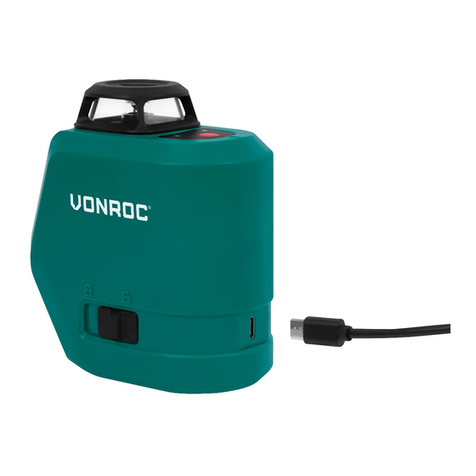
VONROC
VONROC LL505DC Original instructions
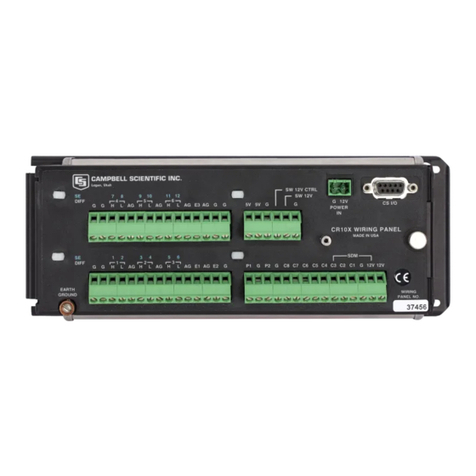
Campbell
Campbell CR10X instruction manual
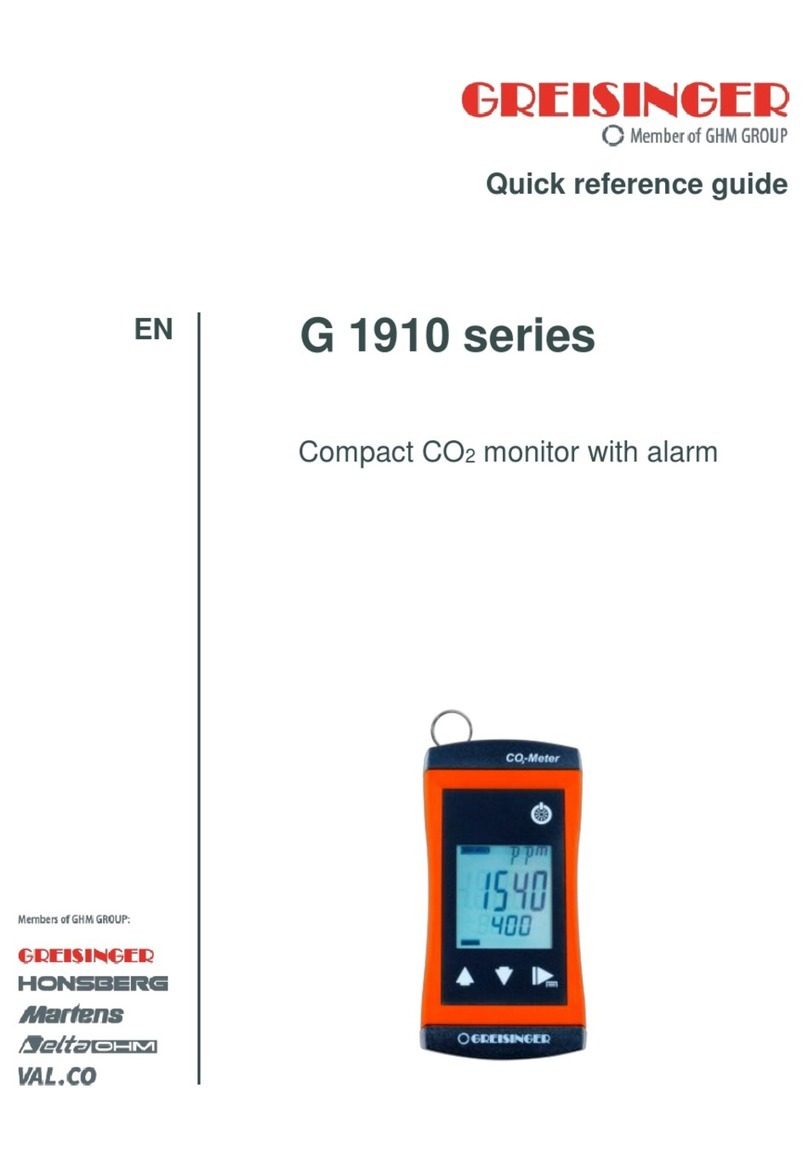
GHM
GHM GREISINGER G 1910 Series Quick reference guide
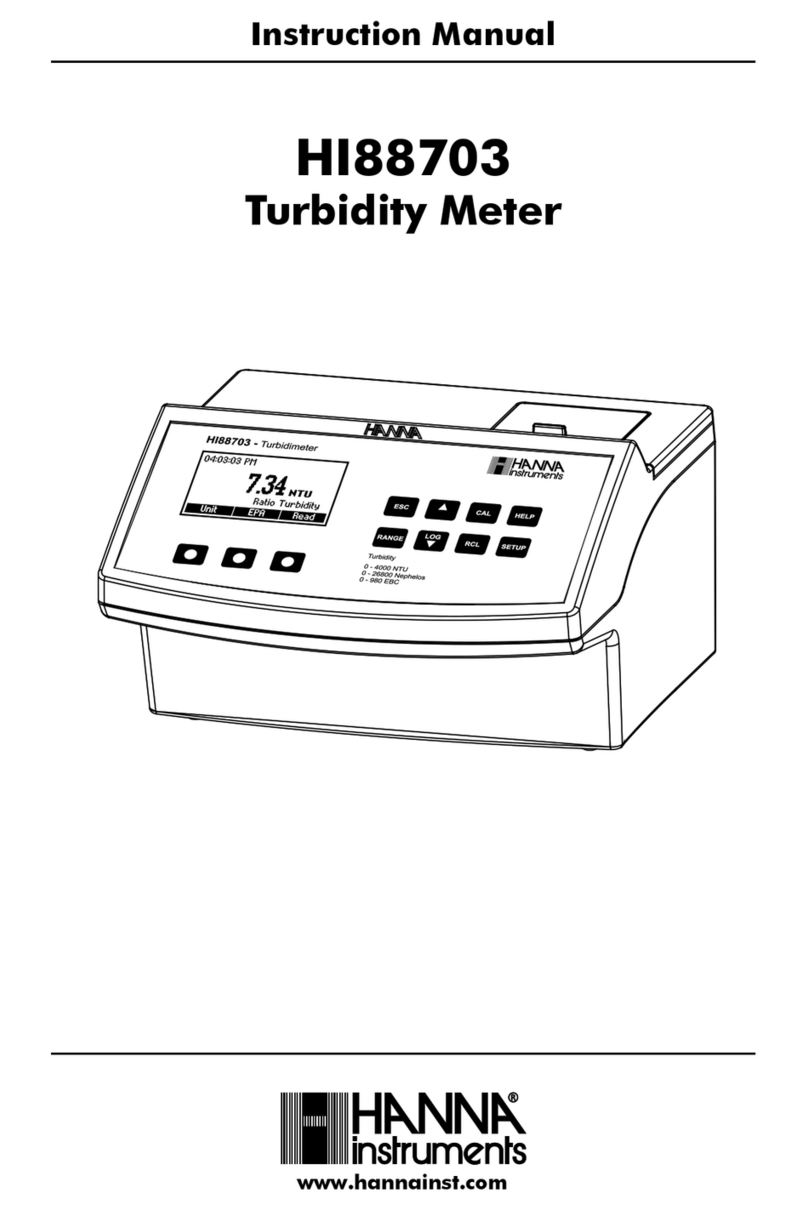
Hanna Instruments
Hanna Instruments HI88703-02 instruction manual
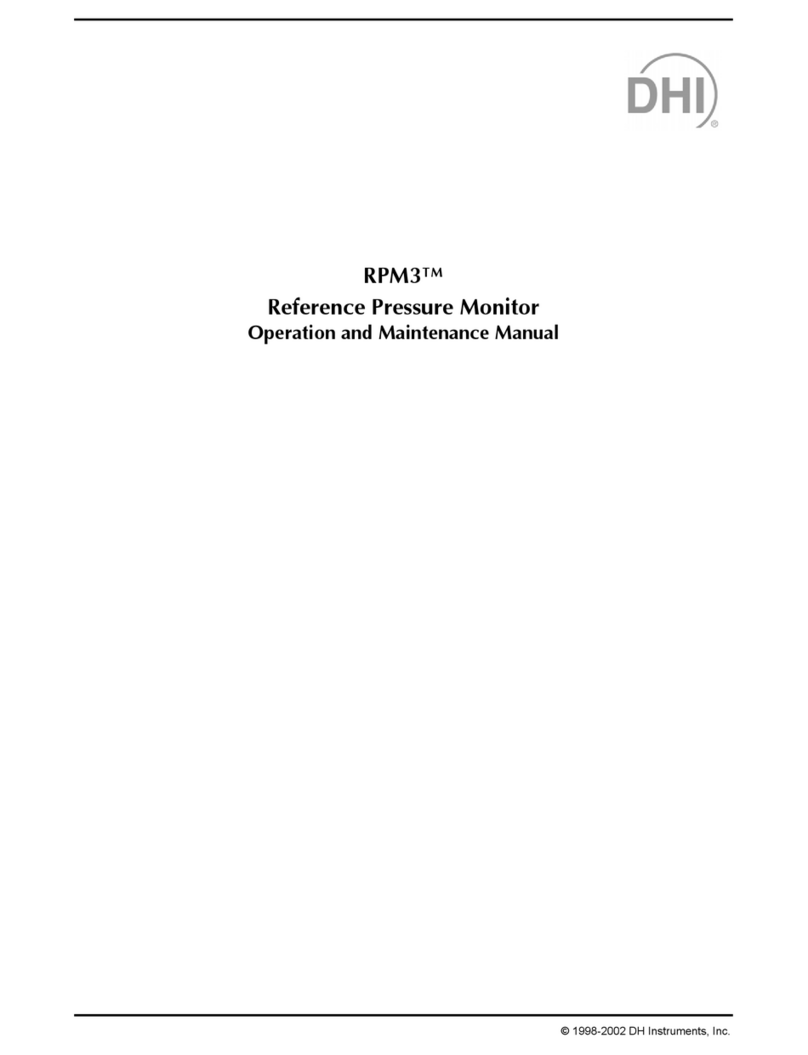
DH Instruments
DH Instruments RPM3 - VERSION 2002 Operation and maintenance manual
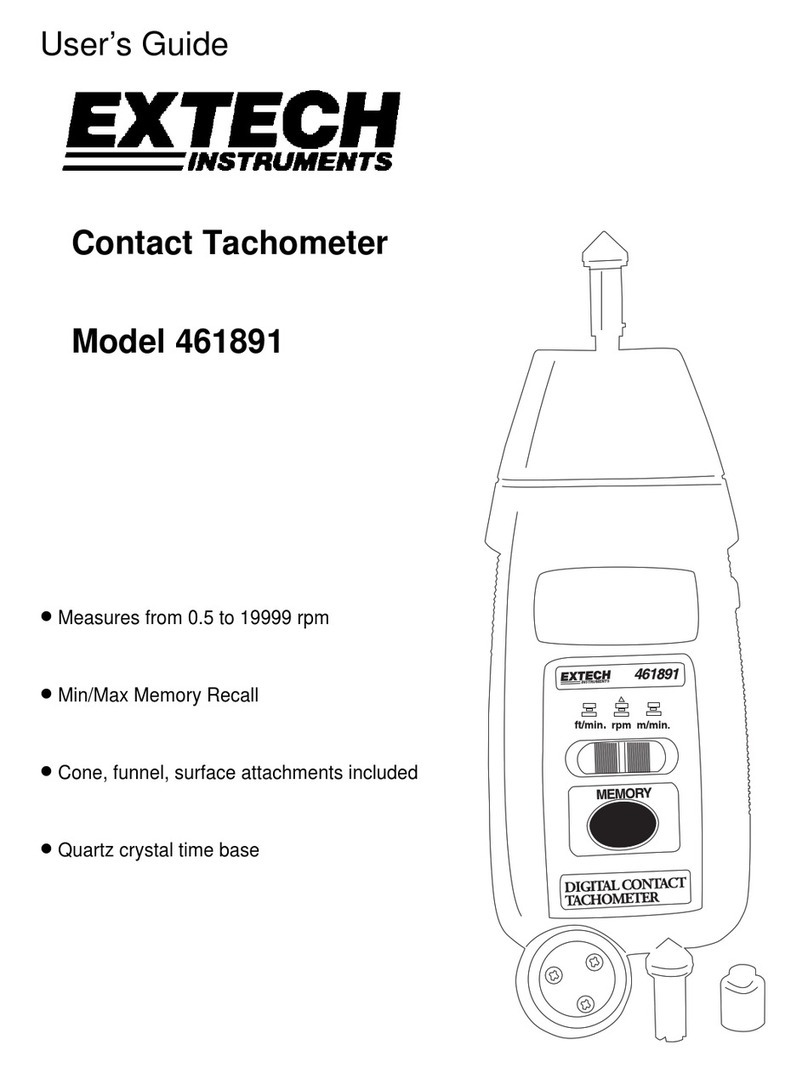
Extech Instruments
Extech Instruments 461891 user guide

